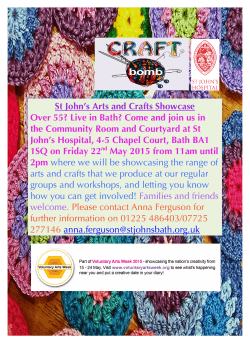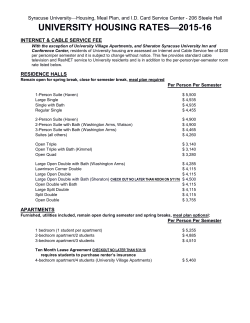
Lesson 3: Being naked
Lesson 3: Being naked Lesson outline Lesson objectives: Children know that different rules and habits apply when it comes to nudity and privacy. Children know - and respect - that those habits and rules can differ per situation. Articles required: Basic •Worksheet 3 Extra • A dressed doll • A bath of water (possibly a towel to dry off the doll with) Exercises: Basic 3.1 Naked Group discussion with illustration Instruction exercise (smartboard) 5 minutes 3.2 Undressing Active exercise Instruction exercise (smartboard) 10 minutes 3.3 In which situations are you naked? Group discussion Instruction exercise 10 minutes Extra 3.4 In the bath Active exercise Instruction exercise 10 minutes Picture books: Bellybuttons are Navels, Mark Schooen, BookSurge Publishing (1990) The Body Book, Claire Rayner, Piccolo Books (1979) The Family Book, Todd Parr, Little Brown (2010) Amazing You! Getting Smart About Your Private Parts, Gail Saltz, Puffin (2008) Who Has What? All About Girls’ Bodies and Boys’ Bodies, R. Harris & N. Westcott, Walker Books (2011) © Rutgers, Spring Fever: Relationships and Sexual Health Education/ Reception, Year 1 and Year 2 pack, lesson 3: being naked 23 Lesson introduction Every child walks around naked every now and then. Some children would like to spend all day without wearing any clothes, while others would rather not. Now let’s have a look at those situations in which you may or may not like to be naked, and whether any rules then apply. Exercises 3.1 Naked •Show the children an illustration on the smartboard of a boy and girl wearing clothing ( available on the worksheet ( 3). Start with the question: 1). This illustration is also ° Which part of the body is naked? (head, neck, hand/arm) ° Do you like it when these parts of the body are naked? ° Do you sometimes have a naked arm, hand, head, etc? ° In which situations are you sometimes naked? (Bath, shower, toilet, beach, etc.) 3.2 Undressing If you don’t have a smartboard, you can use the ‘In the bath’ exercise 3.4 which is available under the extra exercises. •Allow a number of children to come in turn to the smartboard to remove a piece of clothing from the boy or girl (by dragging it away) ( 1) until they are naked. •Which piece of clothing do you first remove when you start undressing? •Once the illustrated boy and girl are undressed, ask the questions below: ° Which body parts can we see when someone wears no clothing? (Breasts, stomach, bellybutton, genitals (discuss the genitals of a girl and a boy). ° Can someone point out these body parts? ° Do you like it when these parts of your body are naked? ° Do you sometimes have a naked arm, hand, head, etc? ° In which situation? (bath, shower, toilet, beach, etc.) •The children can then dress the boy and girl again at the end of the exercise. 3.3 In which situations are you naked? •In which situations are you naked? Ask the children to share ideas with a talking partner first and then allow them to respond. Make sure that examples such as taking a bath, shower, getting changed at the swimming pool, going to the toilet and washing yourself are discussed. •You can ask questions such as: ° When may you be naked: bathroom/shower, bedroom, beach, changing room, toilet, bed, school/class/living room/ outdoors? ° When do you wear your bathing trunks? (swimming pool/beach) ° When do you wear your underwear? (toilet/bed/bedroom) ° When are you dressed? (school/class /living room/outdoors) © Rutgers, Spring Fever: Relationships and Sexual Health Education/ Reception, Year 1 and Year 2 pack, lesson 3: being naked 24 •Ask the following questions to encourage children to think about their own wishes and limits regarding nudity: ° When is it nice or unpleasant to be naked? ° Do you mind if someone sees you naked? If so, why? Who do you mind or not mind seeing you naked? ° When do some people not like to see other people/children naked? ° When would you rather be naked on your own? ° Do you lock the bathroom or toilet door at home? Do we lock the doors when we use the toilet here at school? ° Do you like it when somebody goes to the toilet with you? Who may/may not go with you? Close “People can have very different habits when it comes to taking a shower or bath, going to the toilet and being naked. Those rules and habits differ for each situation. Some children don’t mind if other children see them naked, while other children find this very unpleasant. Some of you are used to taking a bath together with your brothers and sisters, while other children take a bath alone. In some families, they always lock the door when they go to the toilet, while other people leave the door open. Here at school too, we may have other rules or habits than you are used to at home. Each individual likes or dislikes different things. It is very important to know which rules or habits apply at school, at home or when visiting friends, and respect them. Every child has a right to privacy.” Extra 3.4 In the bath This activity replaces the digital lesson ‘Undressing’ but can also be given as an extra lesson. •Sit the children in a group. Hold a dressed doll in your hand. •Tell them that you are going to give the doll a bath today. Ask the children, one by one, to remove an article of clothing from the doll. Ask the following questions: ° Which piece of clothing would you first remove if you were going to take a bath? ° Which body parts can we see when someone wears no clothing? (breasts, stomach, bellybutton, penis or vagina discuss the genitals of a girl and a boy). ° Can someone point out these body parts? ° Do you like it when these parts of your body are naked? •After everything is discussed, the doll can be put in the bath, dried off and then dressed again. © Rutgers, Spring Fever: Relationships and Sexual Health Education/ Reception, Year 1 and Year 2 pack, lesson 3: being naked 25 3 © Rutgers, Spring Fever: Relationships and Sexual Health Education/ Reception, Year 1 and Year 2 pack, lesson 3: being naked
© Copyright 2025









